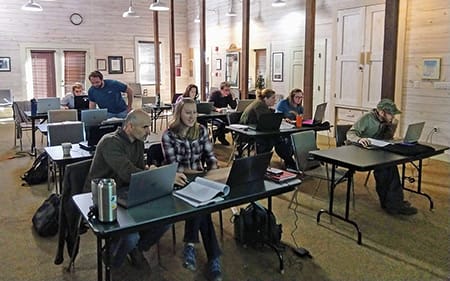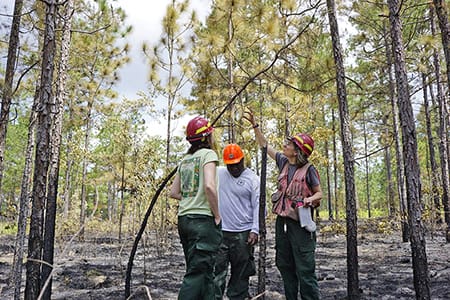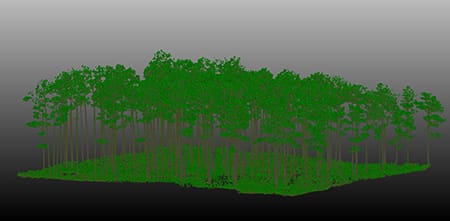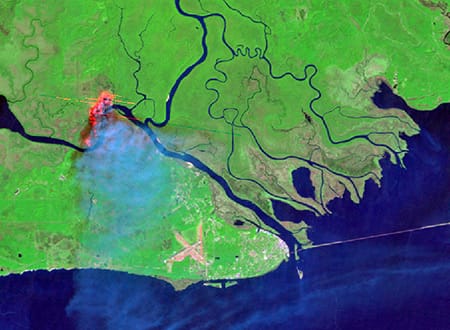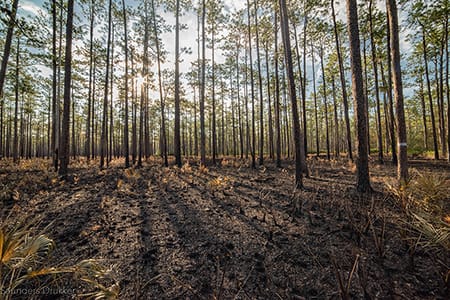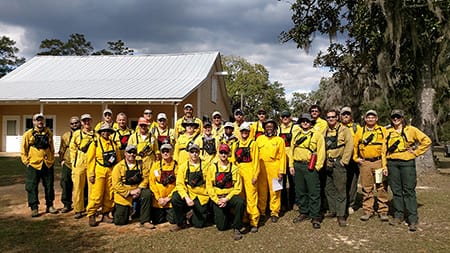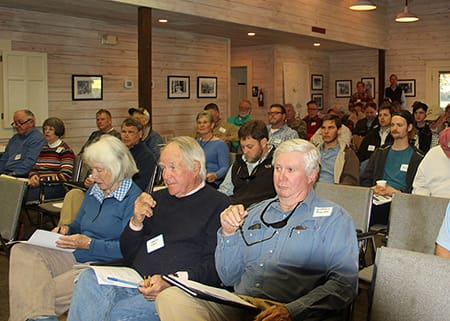Hurricanes can wreak havoc on carefully tended pine plantings in the Southeast, but they can provide a unique opportunity to learn about management.
After Hurricane Michael struck northwest Florida and Southwest Georgia in 2018, Tall Timbers’ research ecologist Seth Bigelow and collaborators at The Jones Center and the University of Alabama obtained a grant from the National Science Foundation to study the storm’s effects on planted longleaf pine.
Researchers visited pine stands throughout the impact zone and saw how a range of wind speeds and management strategies affected the probability of tree damage.
Their findings were recently published in the journal, Forest Ecology and Management.
Researchers found two results that were to be expected and had little to do with management practices:
The probability of damage increased dramatically when maximum sustained wind speed exceeded 79 mph and also when there was little forest cover upwind to act as a buffer.
Researchers emphasized however that a third finding – the probability that damage increased for trees that were taller than average or which had low taper – merits special attention because it can be influenced by management.
Taper is measured by breast-height diameter divided by total tree height.
A ratio of 0.15 inches or more of breast-height diameter per foot of tree height appeared to offer substantial protection against wind damage.
But how can landowners alter the taper of their trees?
Maximum height growth is limited by the conditions of the site where a tree grows so there is little opportunity to modify it. In contrast, the diameter growth of a tree is related to crowding by nearby trees, and it is possible to increase diameter growth (and therefore taper) by thinning or strategically harvesting some trees in a stand to provide more growing space.
Managers often use a different index, the live crown ratio, to know when it is time to thin a stand, but the study findings suggest they should be keeping an eye on taper as well.
The researchers found that tall stands with an average height of 60 feet were much more likely to have trees with low taper than shorter stands, an average height of 40 feet.
This suggests the importance of being vigilant about thinning as planted stands develop.
Although remaining trees can be slightly more vulnerable to windthrow for several years after thinning, such vulnerability can be minimized by maintaining an open stand with space between adjacent tree crowns so that all trees acquire some level of resistance to windthrow.
This kind of structure has the added benefit of fostering growth and diversity of the understory plant community and supporting the spectacular wildlife community that depends on it.
The 2024 Atlantic Hurricane forecast from Colorado State University predicts a hyperactive season with 23 named storms, 11 hurricanes and, of those, five major (Category 3, 4, or 5) storms. Officials point toward a combination of La Niña and record warm water temperatures in the Atlantic Basin as indicators of a active cyclone season.
Hurricanes are becoming stronger and more frequent as a result of human-caused climate change and pose a threat to longleaf pine plantings, but careful management will improve the chances of a stand remaining unscathed if it is in the path of a major storm.
Read the study’s findings here








